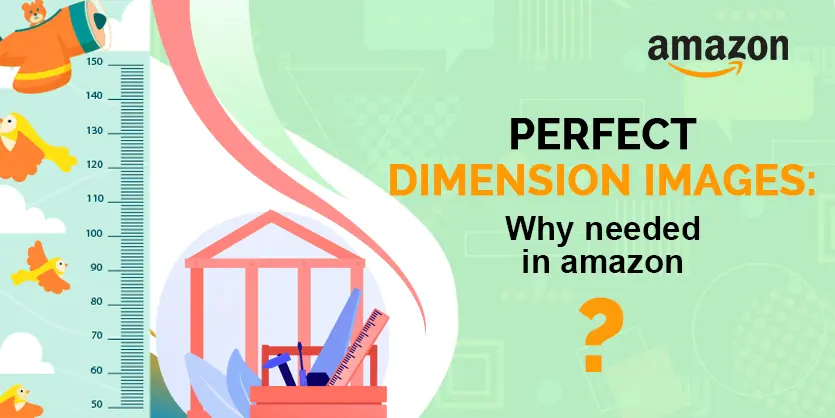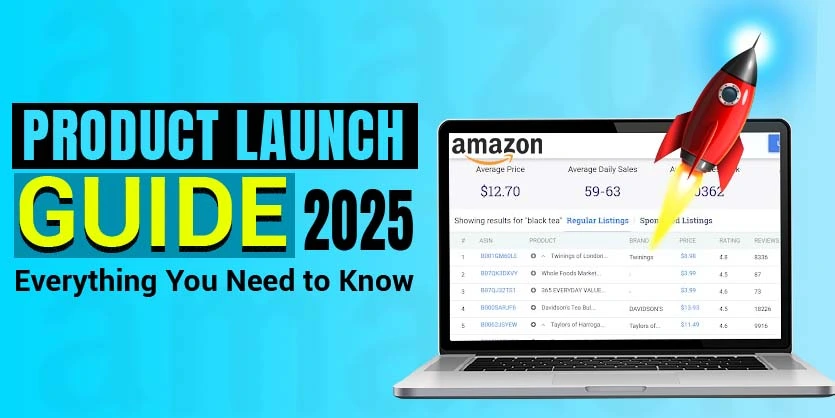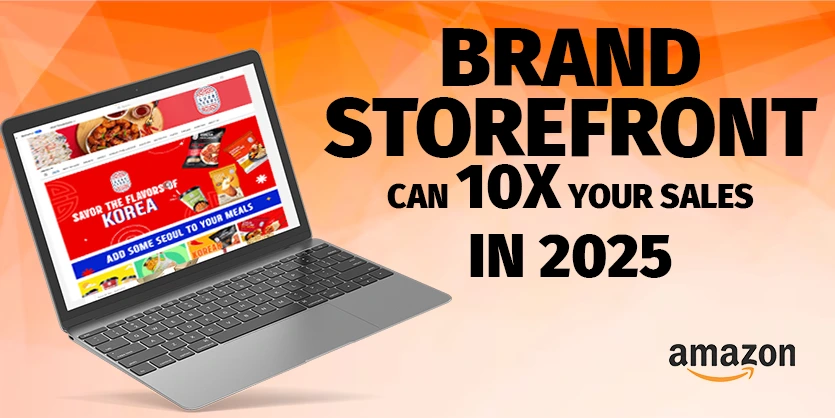Amazon has roared as the mother of e-commerce. Amazon always has used tricks up its sleeve which makes them the most-liked and visited website for online shopping with an outstanding customer support team and features.
Why needed perfect dimension images in Amazon?
In e-commerce, images are the most powerful way to attract customers, and If you do the right things, that guaranteed better opportunities and a larger audience.
In this page, we’re going to discuss Amazon’s perfect dimension images requirements for its sellers, why it’s very important to have product dimension images, and how they can help you make your business grow up.
It’s easy to judge the scale of products when users shop at physical stores. For example, if anyone is interested in buying a TV, they will immediately be able to easily gauge its approximate size just by looking at it, and also compare its size relative to other products in the store. Similar, e.g. shoes or beauty products, they can pick up the product and hold it in their hands to see if it would fit in their everyday bag. But it’s crucial and immediate understanding of a product’s size is much more difficult to get when viewing images of products on the web just showing the product on a white background, and users have very difficulty getting an accurate impression of the product’s overall size.
Let your customers see which is perfect for him:
You need to show your customers to be able to see that this product fits their needs and their lifestyles.
During testing, when it’s difficult to judge scale from product images, users have to work needlessly hard to determine product sizes. These misinterpretations of product size frequently moved users to wrongly discard perfectly relevant products and even evolved in site elimination in some cases.
Customers have a lot of options on Amazon right at their fingertips, and before they even click on a product, they will look at the images
This will create trust between you and the viewer and ideally lead to them becoming a customer. In selling online, your images will make or break your success.
It’s easy for them to judge the scale of products they’re interested in when users shop at stores, but when viewing images of a product on the web it’s difficult.
We observe that above 42% of users will try to perceive the size of a product through the product page images, but this becomes needlessly difficult and inaccurate without a dimension image.
Increase your business trust with the user:
The best way to look credible as a seller is to show buyers exactly what they’re getting into in today’s world of online shopping.
Product dimension images do not only help you look more trustworthy, they also give you all the freedom in the world to create an attractive digital persona for yourself in front of sellers.
It makes sure that every seller conforms to one standard, and it has no chance of unfair advertising.
One of the main features of a product is its size. You can provide the user with a visceral sense of these unique product attributes and Dimensional images can support feature descriptions ultra-compact or highly portable. In these cases, it helps the user understand the product’s dimensions, and it also helps them to appreciate the small size as a product feature. Users will grasp that feature right away without having to rely on the product description or specs.
You need to show every aspect of your product for the customer to choose that photos. Pick a variety of images for your products is one way to do it, emphasizing different qualities, focusing on different angles, and appealing to different users.
The products won’t sell themselves, try to be as original as you can.
Don’t just photograph the exterior of the bag and throw it onto your product page if you’re advertising a backpack. Try to photograph the inside of the bag to get a different perspective, punctuate unique features, such as inside pockets, partitions, and so on.
Because you know that your image really is the only number one thing you can market yourself off.
Invest in better equipment, lighting, and research. Don’t be afraid to, It’ll come back to you in the end.
Closing the gap between the experience users would have had in a physical store dimension images play a central role. The scale must be inferred through the product images provided by the site. E-commerce sites should always offer at least one “In Scale” image that shows the product relative to a surrounding environment, humans, or other objects of a size known by the site audience.
By using graphics as stand-ins for real human models, Amazon provides users with a sense of scale. It is a good alternative while not as rich as a real model, allowing Amazon to provide fully automated “In Scale” images for literally millions of products.
To look visually appealing, obviously, your images should be fitted. Everyone who sells non-perishable products on the internet either already has their product listed on Amazon, or they have at least once considered it.
However, products on Amazon rely primarily and heavily on images. You have an awesome seller page with well-articulated product descriptions, but at the end of the day, the product images on Amazon are what sell the products. For a buyer on Amazon to get a feel of the product the images are the only way, and hence, you cannot really go wrong with this.
On a web platform, an image with only one product will not gain any under engagement or attention because images are what sell products on the web.
It would absolutely make no sense for you to not exploit which
Feature Amazon lets you appeal many images to a product listing. Give the users a 360-degree view of the product, and use multiple images taken from multiple angles to effectively host your product.
Some alternative ways to get a Dimensional image:
1. Amazon lifestyle image
Lifestyle image is the image that shows the product in use. It can act as a selling feature because they show the product in a new light altogether.
To make the most out of it, always look at the image from a buyer’s perspective, Let your creative flow while creating an image.
Lifestyle images that can help your business conversion go a long way.
2. Use multiple angles
Use models to show off your product from multiple angles. It helps the customer picture themselves using or wearing the product.
Show your product in use in indoor or outdoor settings, and mix up the backgrounds in your additional images for visual interest.
Show your potential customers exactly what it’s like to use your product and why it’s relevant to their interests. Do you have a specific target audience or ideal customer in mind? Include that type of person in your images.
3. Use Photoshop
You can Photoshop people using your product if you aren’t able to take your own lifestyle images.
It’s important to show them every possible angle of your product because your customers cannot actually touch and view your product in person.
Importance of Dimensional image:
Before reading titles, descriptions, or scrolling down the page to get a more comprehensive overview, the user’s first action upon arriving at a new product page was to begin exploring the product images.
There are 6 different types of product images, In addition to the normal “Cut Out” product image type, that all have a significant positive impact on users’ ability to evaluate the product depicted. “In Scale” image is one of the most significant of these image types.
The better your images are, the greater chance you have.
It’s very essential that your scale issues can cause returns and restricted ASINs.
You are assuming that you have identified what is important to your users when you first create your listing.
Information of size that many users are extremely interested in. Showing users “In Scale” images will all help users get a sense of the product’s scale.
During testing, many subjects had difficulty visualizing ounces, cubic feet, inches, and weight “In Scale” images are important for users to clarify the sizes of various units of measurement. “In Scale” image is provided the Users will understand product size better.
“That’s helpful, showing scale,” who did find the “In Scale” image and immediately grasped how big the bottle was by seeing the product held in a hand. Users prefer obtaining their information from product images rather than specifications.
Generally, users are loath to read through long product descriptions or specifications. The process is slower than simply looking at a product image.
Moreover, the “In Scale” image can also often be used to excite users about the product by showing both the product’s size and how it can fit into their lifestyle.
Users may develop misconceptions about a product’s size without the frame of reference provided by “In Scale” images. “Cut Out” images may look too large or too small, depending on the photography. It can abandonment for misinterpreting a product’s size will lead users to “wrongly” discard perfectly relevant products.
Videos can provide excellent product size information by showing all sorts of scale images, but we found during testing that a large group of users will not watch product videos, so it should only provide additional scale information and not serve as a replacement for “Dimensional” images.
That’s All for today, if you have any more questions regarding your Amazon, Let us know in the comments below!



